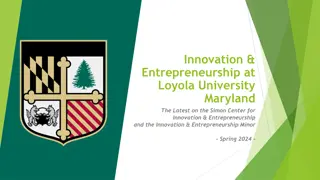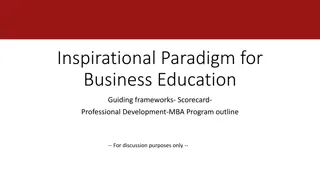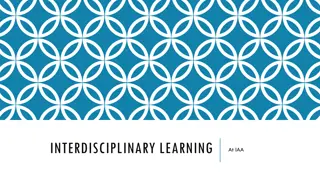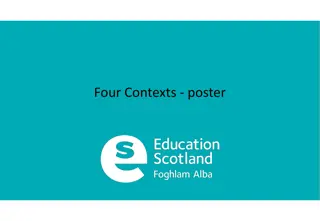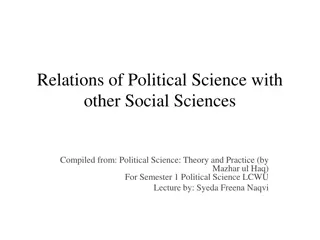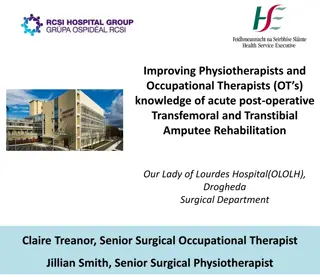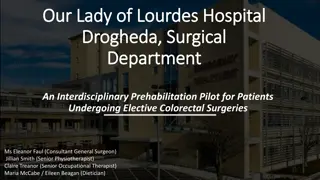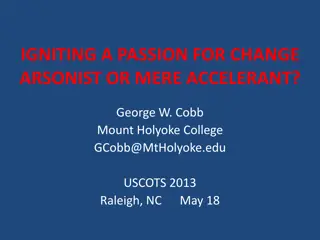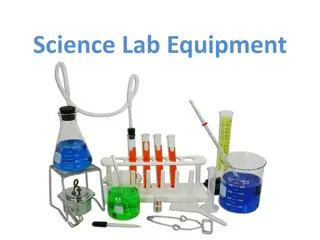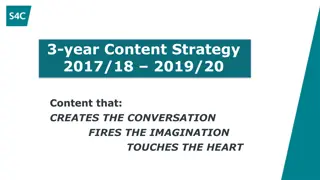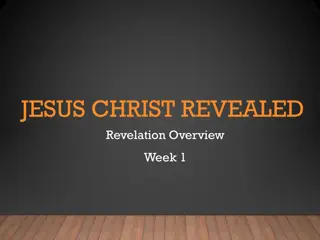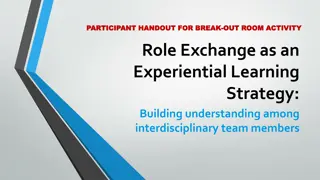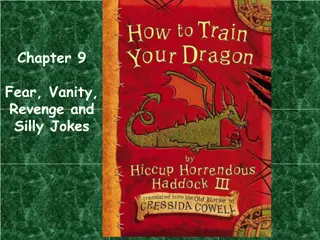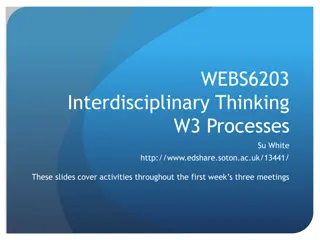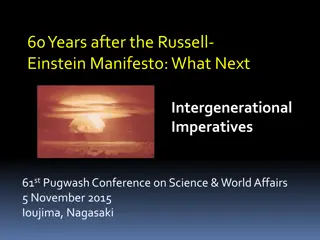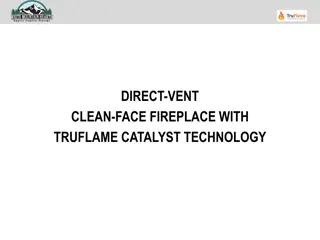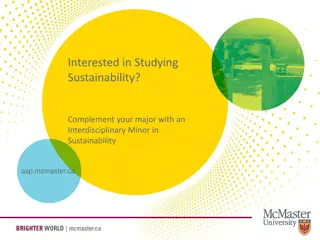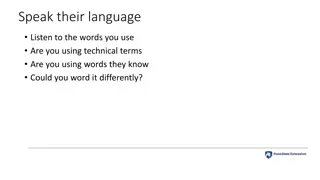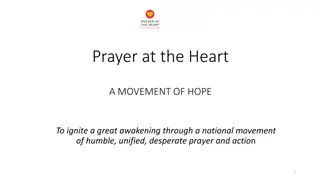Embers: Igniting Interdisciplinary Learning
This study introduces a new method, EMBERS, aimed at fostering interdisciplinary learning, synthesis, and convergence among diverse perspectives. It explores wicked problems, problem structuring processes, and the application of learning theories like constructivism. The approach emphasizes understanding each other's mental models and using them to creatively solve complex issues. The sharing of expert mental models is crucial in transdisciplinary work, where everyone brings expertise and novices learn from each other.
Download Presentation

Please find below an Image/Link to download the presentation.
The content on the website is provided AS IS for your information and personal use only. It may not be sold, licensed, or shared on other websites without obtaining consent from the author.If you encounter any issues during the download, it is possible that the publisher has removed the file from their server.
You are allowed to download the files provided on this website for personal or commercial use, subject to the condition that they are used lawfully. All files are the property of their respective owners.
The content on the website is provided AS IS for your information and personal use only. It may not be sold, licensed, or shared on other websites without obtaining consent from the author.
E N D
Presentation Transcript
EMBERS: A NEW METHOD FOR IGNITING INTERDISCIPLINARY LEARNING, SYNTHESIS AND CONVERGENCE D R . D E A N A D . P E N N I N G T O N A S S O C I A T E P R O F E S S O R O F G E O L O G I C A L S C I E N C E S UN I V E R S I T Y O F T E X A S A T E L P A S O EER 2018 July 19, 2018 Deana Pennington1, Shirley Vincent2, Dave Gosselin3, Roderic Parnell4, and Antje Danielson5 1University of Texas at El Paso, 2Shirley Vincent Evaluation Consulting, 3University of Nevada at Lincoln, 4Northern Arizona University, 5MIT
WICKED PROBLEMS Ill-defined, Ill-structured Rapidly changing situations, dynamic information Vagueness and ambiguity Uncertainty, complexity Unclear future Discovery, Framing & Evaluation of Options LEVEL OF UNCERTAINTY Simple problems Clear future Clear goals Conflicting goals LEVEL OF AMBIGUITY 2/27/2025
PROBLEM STRUCTURING PROCESS What is the problem? Diverse perspectives Iterative How can we integrate our expertise? Diverse expertise 2/27/2025
APPROACH: ITS A LEARNING PROBLEM! Learn each other s mental models, Learn how to synthesize the differences into an integrated conceptual framework, and Learn how to use that conceptual framework as a springboard to creative problem solving (Pennington, 2006, p. 1) 2/27/2025
APPLY LEARNING THEORIES Constructivism Transformative learning theory Experiential learning Model-based reasoning 2/27/2025
LEARNING & CONSTRUCTIVISM Constructivism: learner actively builds new concepts based upon current and past experiences, encoded in a mental model Experts have extensive mental models around their area of expertise and are able to reason with them in ways that differ from novices In transdisciplinary work everyone is an expert at some things a novice at others 2/27/2025
SHARING EXPERT MENTAL MODELS Real world phenomenon Our minds are rather messy places! 2/27/2025
EXPLAINING PERSPECTIVES Explainer: Deep knowledge in a narrow area Difficult to simplify & represent Depends on many interrelated and foundational concepts Learner: Lack of foundational concepts Misconception of concepts Jargon unfamiliar No comparable mental model No perceived connections to their own knowledge 2/27/2025 STUDENTS: Practice explaining perspectives
TRANSFORMATIVE LEARNING Disorienting dilemma new concepts and vocabulary new collaborators they may not know very well very different goals and values unfamiliar data and methods new tools that may have steep learning curves Reflection Group deliberation STUDENTS: Practice engaging different perspectives Mezirow, 1970s - 2014 2/27/2025
EXPERIENTIAL LEARNING Kolb (1974-): experiential learning: active learning while experiencing something Grasping Key processes: 1. Grasping: What has been said 2. Transforming: Connecting it to existing mental model Iterative Transforming TEACHERS: Facilitate better grasping experiences STUDENTS: Purposeful reflection to promote transforming 2/27/2025
BETTER GRASPING Model-based reasoning: Employing models to invoke conceptual change Reasoning by mental modeling aided by external devices (Nersessian 1999) 2/27/2025
MODEL-BASED REASONING Models: Analogies, metaphor, thought experiments, visual models, semantic models and/or simulation models used for abstraction and communication of complex concepts Models enable the offloading and summarizing of complex information so that individuals can grasp and manipulate (e.g. transform) more information (Ifenthaler 2013) 2/27/2025
BOUNDARY OBJECTS External representations == Boundary objects (Star and Griesemer, 1989) Boundary objects: Physical devices that facilitate the transfer of information across boundaries between professions 2/27/2025
Grasp, reflect & transform T0 Mental Model MM t1 t2 MM Mental Model t0 t1 Convergent Learning Boundary Negotiating Object (BNO) Negotiating Object SHARED PROBLEM MODEL t2 Boundary BNO Mental Model MM Mental Model t0 Modified from Pennington et al. (2016)
CONVERGENT LEARNING SYSTEM CONVERGENT OUTCOMES Shared problem model Synergistic research ideas Shared research vision INPUT: Perspectives 1 n If > threshold EMERGENCE Experiential learning Model-based reasoning + Integrated Knowledge Capital + ACTIVITY Knowledge integration efficiency Collaboration skills Social ties + Transformative Learning Collaboration Capital (R) +/- + Motivation LEGEND If < threshold Exit collaboration STATE PROCESS Modified from Pennington (2016) 2/27/2025
TESTING THE MODEL Lighting the fire of transdisciplinary teamwork
EMBERS WORKSHOPS 10 day summer workshop for PhD students - 2016, 2017 ONLY 15% WILL STAY IN ACADEMIA decision makers and stakeholders of tomorrow! 13 students each workshop Recruited from large, interdisciplinary NSF projects Different disciplines, different institutions 2/27/2025
DATA COLLECTION Evaluator (Shirley Vincent) Surveys, interviews Analysis partially complete Learning analytics team in Australia (Kate Thompson) Photos, videotape, audio recording Documents produced during workshop Analysis in progress 2/27/2025
PRE- AND POST-SURVEY Transdisciplinary Orientation Scale Misra, Stokols and Cheng (2015) Modified to better fit PhD student experiences to date Half of the students had dramatic increases in their Trandisciplinary Orientation Scale scores! 2/27/2025
PRACTICAL ADVICE Design better GRASPING experiences Help students become aware of their own and others assumptions; Practice redefining problems from different perspectives; and Discourse that is learning-centered, participatory, interactive and involves group deliberation. 2/27/2025
This material is based upon work supported by the National Science Foundation under Grant No. DGE-1545404 for the EMBeRS project "Any opinions, findings, and conclusions or recommendations expressed in this material are those of the author(s) and do not necessarily reflect the views of the National Science Foundation. Based on a decade of prior research synthesizing evidence from learning, organizational, social, and cognitive sciences: NSF grants: #OCI-1135525 (2006-07) #OCI-0753336 (2008-10) #OCI-0636317 (2010-13 SESYNC award (2013-15) with NCSE Pennington 2008, 2010, 2011a, 2011b, 2013, 2016 Pennington et al. 2016, Gosselin et al. 2016 Thompson et al. (2017) Pennington et al. (2018) 2/27/2025


![READ [PDF] Her Viking Dragon Warrior (Viking Ancestors: Age of Embers Book 2)](/thumb/42246/read-pdf-her-viking-dragon-warrior-viking-ancestors-age-of-embers-book-2.jpg)
